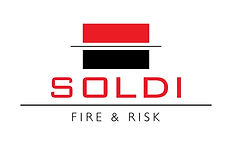Soldi Fire and Risk produces clear, code-compliant fire safety documentation for design, construction, and occupancy.
We translate complex NFPA and IBC requirements into simple, defendable reports and plans that meet local authority expectations. Every document is written in plain English and aligned with the actual layout, phasing, and construction methods of your project.
Our documentation supports approvals, inspections, and occupancy across new build and refurbishment projects throughout the Texas triangle
Our reports are designed to bridge design intent and site reality, giving owners, contractors, and code officials a shared, practical reference.

How We Apply Fire Safety Documentation in Practice
Our process follows NFPA and IBC standards through each project phase, from early design to occupancy. The goal is always clarity and compliance built around how the project is actually delivered.
Design Stage
We review layouts, occupancy types, and construction methods against NFPA 101 Life Safety Code, IBC Chapter 10, and applicable state or local amendments. Early advice covers fire separation, egress capacity, and system interfaces, reducing later design revisions and approval delays.
Construction Stage
We prepare Construction Fire Safety Plans under NFPA 241 and review temporary systems such as alarms, standpipes, and fire watch provisions. Our work links documentation with daily site operations so that contractors and safety officers have usable guidance, not abstract code notes.
Pre-Occupancy and Handover
We produce final Fire and Life Safety Reports verifying compliance with installed systems, fire ratings, and compartmentation. Where required, we coordinate inspections or third-party verifications before the Certificate of Occupancy.
Post-Completion
Owners receive structured Fire and Emergency Plans and optional Fire Risk Assessments for ongoing management. These reports meet NFPA 1 Chapter 10 and align with OSHA emergency planning expectations.
Each report is written for the audience who will use it, whether it’s a code official, contractor, or property manager. This approach keeps documentation useful, auditable, and consistent from design through to building operation.
